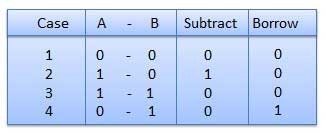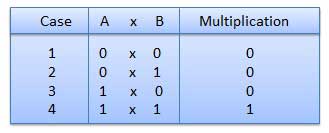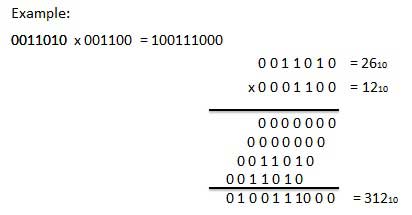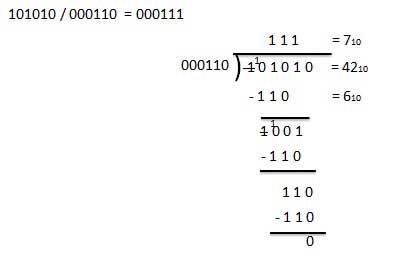BINARY ARTHMETIC
Binary Arithmetic
Binary arithmetic is used in digital systems mainly because the numbers (decimal and floating-point numbers) are stored in binary format in most computer systems. All arithmetic operations such as addition, subtraction, multiplication, and division are done in binary representation of numbers. It is necessary to understand the binary number representation to figure out binary arithmetic in digital computers.
* Binary Addition
* Binary Subtraction
* Binary Multiplication
* Binary Division
Binary Addition:
It is a key for binary subtraction, multiplication, division. There are four rules of binary addition.





fourth case, a binary addition is creating a sum of (1 + 1 = 10) i.e. 0 is written in the given column and a carry of 1 over to the next column.
Example − Addition

Binary Subtraction:
Subtraction and Borrow, these two words will be used very frequently for the binary subtraction. There are four rules of binary subtraction.

Example − Subtraction

Binary Multiplication:
Binary multiplication is similar to decimal multiplication. It is simpler than decimal multiplication because only 0s and 1s are involved. There are four rules of binary multiplication.

Example − Multiplication

Binary Division:
Binary division is similar to decimal division. It is called as the long division procedure.
Example − Division






Comments
Post a Comment